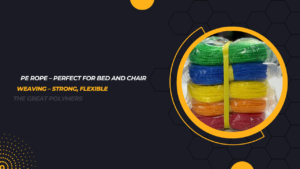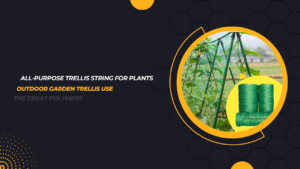Introduction to PE Monofilament Fishing Net Twine
In the world of fishing, the choice of netting material can significantly impact the success of a fishing venture. PE (Polyethylene) monofilament fishing net twine is a popular choice among fishermen due to its unique properties and versatility. Let’s delve into what makes PE monofilament fishing net twine a preferred option for anglers around the globe.
Properties and Characteristics of PE Monofilament Fishing Net Twine
PE monofilament fishing net twine boasts several key characteristics that make it stand out in the world of fishing gear. Firstly, its high strength-to-weight ratio ensures durability and reliability even under high tension. This strength is complemented by excellent abrasion resistance, allowing the twine to withstand the rigors of frequent use in harsh marine environments. Additionally, PE monofilament twine exhibits impressive knot strength, crucial for securing catches without fear of breakage.
Applications of PE Monofilament Fishing Net Twine
The versatility of PE monofilament fishing net twine extends across various fishing practices, including commercial fishing operations, recreational angling, and aquaculture. Its adaptability to different fishing methods and environments makes it a staple for fishermen worldwide.

Factors to Consider When Choosing PE Monofilament Fishing Net Twine
When selecting PE monofilament fishing net twine, several factors come into play. Diameter determines the net’s mesh size and, consequently, the size of the fish caught. Breaking strength is crucial for withstanding the forces exerted during hauling and lifting. UV resistance ensures longevity, especially in sunny climates, while color can affect the net’s visibility underwater.
Manufacturing Process of PE Monofilament Fishing Net Twine
PE monofilament fishing net twine is manufactured through a series of intricate processes. It begins with polymer extrusion, where molten polyethylene is forced through a die to form continuous filaments. These filaments are then spooled and twisted to achieve the desired thickness and strength before undergoing heat setting to stabilize their molecular structure.
Comparison with Other Fishing Net Twine Materials
In comparison to other fishing net twine materials such as nylon and polyester, PE monofilament twine offers distinct advantages. While nylon may have higher elasticity, PE excels in terms of durability and abrasion resistance. Polyester, on the other hand, may offer similar strength but lacks the lightweight properties of PE.
Maintenance and Care Tips for PE Monofilament Fishing Net Twine
Proper maintenance and care are essential to prolonging the lifespan of PE monofilament fishing net twine. Regular cleaning with mild detergent and freshwater helps remove salt and debris, while proper storage in a dry, cool environment prevents degradation. Periodic inspection for wear and tear ensures early detection of potential issues.
Environmental Impact of PE Monofilament Fishing Net Twine
Concerns regarding the environmental impact of fishing gear have prompted a closer look at the materials used. While PE monofilament fishing net twine is not biodegradable, efforts are underway to develop eco-friendly alternatives and promote recycling initiatives to mitigate its environmental footprint.
Future Trends in PE Monofilament Fishing Net Twine Technology
Looking ahead, advancements in PE monofilament fishing net twine technology are focused on sustainability and innovation. Research into biodegradable polymers and eco-friendly manufacturing processes aims to reduce the industry’s environmental impact while maintaining performance standards. Additionally, ongoing developments in manufacturing techniques promise even greater strength and durability.
Conclusion
In conclusion, PE monofilament fishing net twine stands as a reliable and versatile option for fishermen across the globe. Its combination of strength, durability, and adaptability makes it a preferred choice for various fishing applications. As technology advances and environmental awareness grows, the future of PE monofilament twine holds promise for both fishermen and the planet.
Unique FAQs
- Is PE monofilament fishing net twine suitable for deep-sea fishing?
- While PE monofilament twine is durable, its suitability for deep-sea fishing depends on the specific conditions and target species. Consultation with experienced anglers or fishing gear experts is recommended.
- Can PE monofilament fishing net twine be repaired if it gets damaged?
- Minor damages to PE monofilament twine can often be repaired using specialized repair kits available at fishing supply stores. However, extensive damage may require replacement.
- Does the color of PE monofilament fishing net twine affect its performance?
- The color of PE monofilament twine can impact its visibility underwater, potentially influencing catch rates. Bright colors like orange or yellow may be more visible in certain conditions, while darker shades like green or blue may be less conspicuous.
- How long can PE monofilament fishing net twine last with proper care?
- With proper maintenance and care, PE monofilament fishing net twine can last several fishing seasons. Regular cleaning, storage in a dry environment, and periodic inspection for wear and tear are key to maximizing its lifespan.
- Is PE monofilament fishing net twine environmentally friendly?
- While PE monofilament twine is not biodegradable, efforts are underway to develop eco-friendly alternatives and promote recycling initiatives to mitigate its environmental impact.










Leave a reply